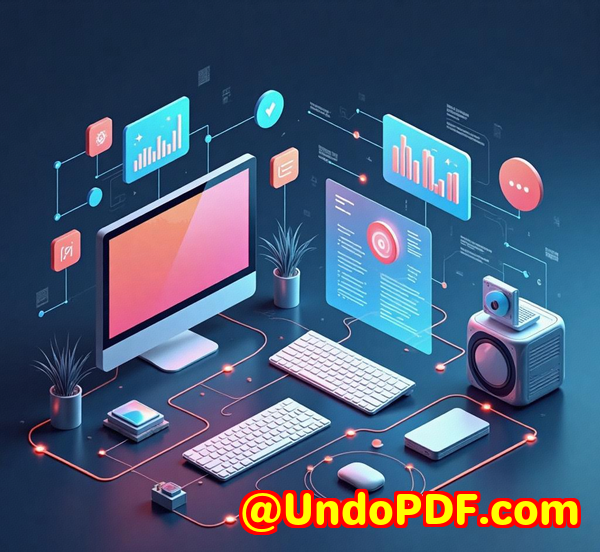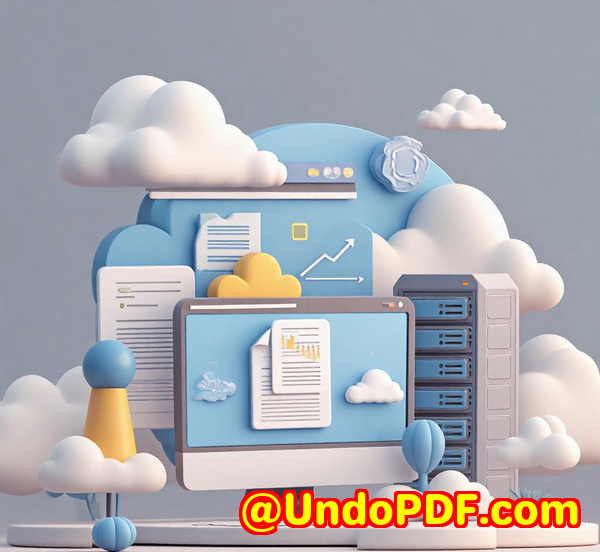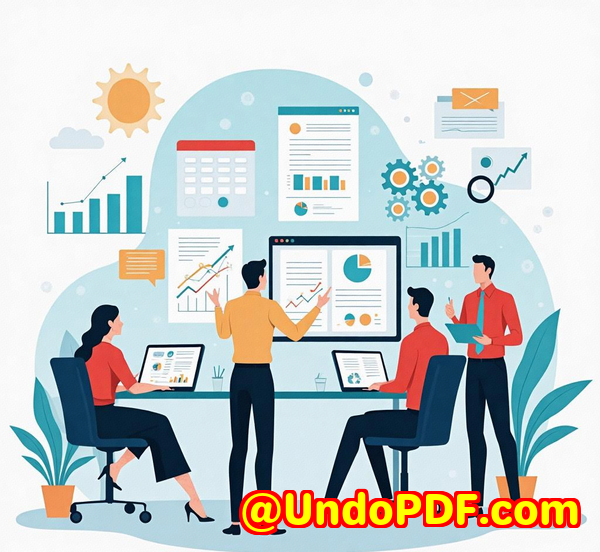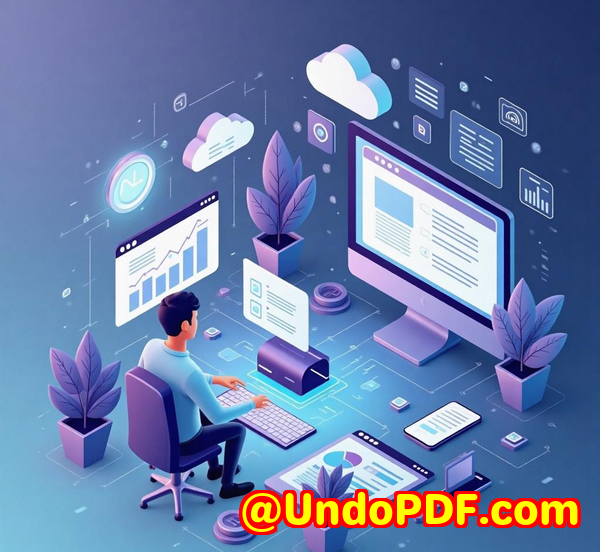Fast and Efficient PDF to WMF Conversion for Large-Scale Document Management
Fast and Efficient PDF to WMF Conversion for Large-Scale Document Management
Managing a large volume of documents is a constant headache, especially when those documents come in PDF format. How many times have you found yourself struggling to make a PDF look perfect in a CAD system or when trying to incorporate it into a graphical design? For businesses that work with large-scale document management, it’s a challenge to convert and manage all these files efficiently.

If you’re someone who deals with massive PDF files day in and day out, you know the drill: file conversion is often tedious, time-consuming, and full of unpredictable errors. But what if you could automate the conversion of PDFs into vector formats like WMF and EMF without requiring extra software or Adobe Acrobat? Let me introduce you to a game-changer: VeryDOC PDF to Vector Converter Command Line SDK.
What is the VeryDOC PDF to Vector Converter SDK?
I came across the VeryDOC PDF to Vector Converter SDK while looking for an efficient way to convert my PDFs into scalable vector graphics formats. This tool allows you to convert PDFs to a range of formats, such as WMF (Windows Metafile), EMF (Enhanced Metafile), SVG (Scalable Vector Graphics), EPS (Encapsulated PostScript), and others. It’s perfect for developers, offering a command-line interface that’s ideal for batch processingsaving both time and resources.
The ability to automate the conversion of multiple PDFs into scalable vector graphics without compromising quality was exactly what I needed. This tool offers an impressive range of file formats, including:
-
WMF and EMF (for Windows and Microsoft applications)
-
SVG (for web and print publishing)
-
EPS and PS (for professional printing and design)
Why You Need It
For industries that require accurate rendering of PDF documents, this tool solves a huge problem. Whether you’re in CAD architecture, business diagramming, GIS cartography, or scientific research, you know how frustrating it can be to manually convert PDF data into formats that can be edited or viewed in a vectorized manner. This tool helps by converting text and images from PDF documents into clean, scalable vector files that can be used in graphic design and CAD software.
One of the biggest pain points I used to face was having to rely on software like Adobe Illustrator to manually trace vector lines from a PDF. This was inefficient and didn’t scale for large projects. VeryDOC solves that by automating the process. I can simply upload a batch of PDFs, and the tool takes care of everythingconverting the entire document into a perfect vector format.
Some Real-World Use Cases
Here’s how I’ve personally benefited from using this tool:
-
Incorporating PDFs into CAD Software:
As an architecture professional, I frequently need to integrate PDF schematics into CAD drawings. With VeryDOC, I can easily convert the PDF to a WMF or EMF file, which integrates seamlessly into CAD systems without any loss of clarity or scalability.
-
Generating Scalable Graphics for Web Design:
If you’re working with websites or graphic design, you understand the need for SVG graphicslightweight, scalable images that look great on any screen size. I use VeryDOC’s SDK to quickly convert high-resolution PDFs into SVG format, ready for use on websites without the usual hassle of reformatting.
-
Converting Diagrams and Charts for Reports:
I frequently convert data-heavy PDFs like business charts or scientific reports into EPS format for use in professional publications. The conversion is fast, and the quality is on par with industry standards.
Key Features That Set VeryDOC Apart
Here are a few standout features that make VeryDOC PDF to Vector Converter a top choice for anyone dealing with large-scale document conversions:
1. Standalone Software (No Acrobat Needed)
Unlike other tools that require you to have Adobe Acrobat installed, VeryDOC runs independently. This is a huge time-saver and eliminates the risk of dealing with software compatibility issues.
2. Batch Processing and Real-Time Conversions
You can batch convert multiple PDFs simultaneously, making it perfect for businesses with a high volume of document conversions. No more waiting hours to process just a few filesnow, I can process hundreds in minutes.
3. Vector Quality
The best part? The output vectorswhether they’re WMF, EMF, or SVGare crisp and clear. No more blurry or pixelated lines. This makes the converted files perfect for any publishing or design application.
4. Password Protection Handling
We all deal with PDFs that are password protected. The VeryDOC PDF to Vector Converter handles these files like a champ, meaning you can still convert encrypted PDFs without breaking a sweat.
5. Support for Multiple Languages
Whether you work in English, French, German, Spanish, or any other language, this software is ready to go, supporting multiple languages for both the user interface and output formats.
Why VeryDOC Over Other Tools?
Now, you might be wondering why you should choose VeryDOC over other PDF conversion tools, especially when there are so many free and premium options available. Well, I’ve been through my share of PDF conversion software, and I’ll tell you, the performance of VeryDOC stands out in the following ways:
1. Speed
When compared to other tools, VeryDOC is lightning-fast, especially in batch processing. Some tools I’ve tried in the past struggle with larger files, but not VeryDOC. It delivers consistent performance even with hundreds of documents.
2. Accuracy
When converting PDFs to vector formats, accuracy is everything. Other software I’ve tested often distorts line thickness or misses small details. VeryDOC preserves the original quality, ensuring all elements of the PDF remain intact.
3. Customization Options
If you’re a developer looking for flexibility, the command-line interface is an absolute game-changer. You can customize the conversion process using various command-line options to adjust output quality, page ranges, scaling, and more. This level of control isn’t often seen in other solutions.
Conclusion: My Recommendation
If you’re working with large volumes of PDF files and need to convert them into high-quality vector formats, I highly recommend VeryDOC PDF to Vector Converter. It’s easy to use, highly customizable, and delivers results quickly and reliably.
With its support for a variety of formats like WMF, EMF, SVG, and EPS, it’s a one-stop solution for all your vector conversion needs. Whether you’re in CAD, graphic design, or scientific publishing, this tool has got you covered.
Don’t waste time manually converting PDFs or dealing with clunky software. Start your free trial now and boost your productivity with VeryDOC PDF to Vector Converter.
Click here to try it out for yourself: https://www.verydoc.com/pdf-to-vector.html.
Custom Development Services by VeryDOC
Need something more tailored to your specific workflow? VeryDOC offers custom development services that can be integrated into your existing systems.
Whether it’s creating custom PDF processing solutions for Linux, macOS, or Windows, or providing cloud-based solutions for document conversion, VeryDOC has the expertise to create a solution that fits your exact needs. Contact us at support.verypdf.com to discuss your project requirements.
FAQ
Q1: Can VeryDOC PDF to Vector Converter handle large PDFs?
Yes, it can handle large PDFs efficiently, even in batch mode. This makes it ideal for processing hundreds or even thousands of files at once.
Q2: Do I need Adobe Acrobat to use VeryDOC PDF to Vector Converter?
No, this software works independently of Adobe Acrobat, saving you time and resources.
Q3: Can I convert password-protected PDFs?
Yes, VeryDOC can convert password-protected PDFs without any issues, as long as you provide the necessary credentials.
Q4: What formats can I convert PDFs into?
You can convert PDFs into WMF, EMF, SVG, EPS, SWF, XPS, HPGL, and PCL.
Q5: Is it possible to automate PDF conversions?
Absolutely! VeryDOC’s command-line interface is perfect for automating large-scale PDF conversions in batch processing.
Tags or Keywords
-
PDF to WMF Converter
-
PDF to Vector Converter
-
Batch PDF Conversion
-
EMF to PDF Conversion
-
Vector Graphics for CAD Systems



